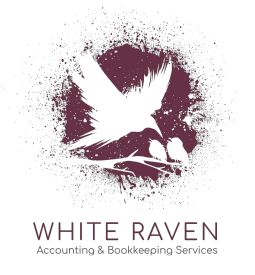Understanding the various types of investment accounts available in Canada is essential for anyone looking to manage their finances effectively. Each account type offers unique features, benefits, and tax implications, so choosing the right one can make a significant difference in achieving your financial goals. By maximizing investment returns while taking advantage of available tax credits, Canadians can work towards building wealth and securing long-term financial stability.
Investment accounts provide a structured way to save and grow money, although numerous options can be overwhelming. For anyone navigating this landscape, learning about the different accounts—from Registered Retirement Savings Plans (RRSPs) to Tax-Free Savings Accounts (TFSAs) and beyond—can be a great start. A well-informed choice, tailored to your financial goals, helps not only in selecting the best account type but also in optimizing returns.
Whether you’re just beginning your investment journey or looking to refine an existing portfolio, understanding the range of Canadian investment accounts and how each can contribute to your financial future is invaluable.
Overview of Investment Accounts
The benefits of investing are substantial. By putting your money to work in the right accounts, you can accumulate wealth, secure your financial future, and achieve your life goals, whether that’s buying a home, funding your children’s education, or enjoying a comfortable retirement. Investing also offers a hedge against inflation, as your returns can potentially outpace the rising costs of living.
In Canada, several types of investment accounts cater to different financial needs and goals. These include Registered accounts, such as TFSAs and RRSPs, which offer tax advantages, as well as non-registered accounts that provide greater flexibility. Understanding the various investment accounts available is crucial for Canadians seeking to optimize their financial strategies and make the most of their money.
Registered Investment Accounts
Tax-Free Savings Account (TFSA)
The Tax-Free Savings Account (TFSA) is a flexible investment account designed to help Canadians save and invest their money without paying taxes on growth. Introduced in 2009, the TFSA allows individuals to contribute a specified amount each year, with the TFSA contribution limit for 2024 set at $6,500. Any unused contribution room can be carried forward to future years, making it a valuable tool for long-term savings and investment.
One of the most significant advantages of a TFSA is its tax benefits. Unlike traditional investment accounts, any income earned within a TFSA, including interest, dividends, and capital gains, is completely tax-free. This means that when you withdraw money from your TFSA, you won’t owe any taxes on your gains.
Within a TFSA, you can invest in a variety of options, including stocks, bonds, mutual funds, and ETFs, giving you the flexibility to build a diversified investment portfolio. To maximize the tax benefits of a TFSA, it’s advisable to use the account for higher-growth investments, as the tax-free growth can significantly enhance your overall returns. For tips on optimizing your contributions, our blog on maximizing your TFSA contributions provides valuable insights.
Registered Retirement Savings Plan (RRSP)
The Registered Retirement Savings Plan (RRSP) is another essential investment account for Canadians, specifically geared toward retirement savings. The contribution limit for an RRSP in 2024 is 18% of your earned income, up to a maximum of $30,780. One of the key benefits of an RRSP is the immediate tax deduction it offers; contributions made to your RRSP can reduce your taxable income for the year, allowing you to save on taxes upfront.
When comparing RRSPs to TFSAs, it’s crucial to understand their different tax treatments. While contributions to an RRSP are tax-deductible, withdrawals are taxed as income during retirement. In contrast, contributions to a TFSA are made with after-tax dollars, but withdrawals are tax-free. This distinction means that RRSPs can be particularly advantageous for individuals who expect to be in a lower tax bracket in retirement.
To maximize your retirement savings, consider strategies such as contributing early in the year to take advantage of compound growth or using your RRSP to purchase a home through the Home Buyers’ Plan.
Registered Education Savings Plan (RESP)
The Registered Education Savings Plan (RESP) is specifically designed to help Canadian families save for their children’s post-secondary education. With an RESP, you can contribute money that will grow tax-free until it is withdrawn to pay for qualifying educational expenses. The government incentivizes savings by offering grants such as the Canada Education Savings Grant (CESG), which matches 20% of annual contributions, up to a maximum of $500 per year for each child.
To maximize the potential of an RESP, families should consider contributing the maximum allowed each year to take full advantage of the government grants. Additionally, using the RESP funds strategically for educational costs can significantly lessen the financial burden when it’s time for college or university.
First Home Savings Account (FHSA)
The First Home Savings Account (FHSA) is a new investment vehicle introduced to help first-time homebuyers save for their home purchase. The FHSA combines the tax benefits of both the TFSA and RRSP, allowing individuals to save up to $40,000 towards their first home purchase. Contributions to the FHSA are tax-deductible, similar to an RRSP, and withdrawals to purchase a first home are tax-free, akin to a TFSA.
To maximize the benefits of an FHSA, individuals should consider making regular contributions to reach the limit, and they can invest in various options, such as stocks and bonds, within the account. By planning effectively and utilizing this account, first-time buyers can build a substantial savings fund that will help them achieve homeownership.
For more in-depth information on how to utilize the FHSA effectively, take a look at our upcoming blog dedicated to exploring first home savings options.
Non-Registered Investment Accounts
What are Registered Investment Accounts?
A regular investment account, also known as a non-registered account, is a flexible investment vehicle that allows Canadians to invest in a wide variety of assets. Unlike registered accounts, regular investment accounts don’t have contribution limits or withdrawal restrictions, making them ideal for individuals who want to invest surplus income or who have maximized contributions in accounts like TFSAs or RRSPs. With these accounts, investors can buy and sell assets such as stocks, bonds, mutual funds, and exchange-traded funds (ETFs), enjoying the freedom to manage their portfolios without government-imposed limits.
However, this flexibility comes with tax considerations. Unlike TFSAs and RRSPs, where investment income grows tax-free or tax-deferred, all income generated within a non-registered account is taxable. Interest income is taxed at an individual’s marginal rate, which could be significant for those in higher tax brackets. Dividends from Canadian corporations are eligible for the dividend tax credit, which reduces the amount of tax owed on this income, making dividends slightly more tax-efficient than interest.
Capital gains, which arise when assets are sold at a profit, are taxed at half the individual’s marginal rate, as only 50% of the gain is subject to tax. As a result, holding assets long-term and focusing on capital appreciation can provide tax advantages within non-registered accounts.
To minimize taxes in non-registered accounts, investors can employ strategies like tax-loss harvesting, where losses from certain assets offset gains elsewhere in the portfolio, reducing overall taxable income. Another approach is to prioritize assets that generate tax-efficient income, such as Canadian dividends or long-term capital gains, over interest-earning investments. For a deeper look into these strategies, explore our blog on tax strategies for non-registered investments.
Joint Investment Accounts
Joint investment accounts are designed for shared ownership, typically between two or more individuals such as spouses, family members, or business partners. These accounts can be particularly useful for couples with shared financial goals, like saving for a home or retirement, as they allow both parties to pool their resources, simplify account management, and access shared funds more easily.
Joint accounts in Canada are usually structured as either “joint tenants with right of survivorship” (JTWROS) or “tenants in common” (TIC). In a JTWROS arrangement, ownership automatically transfers to the surviving account holder upon one owner’s death, making it a popular choice for married couples. In a TIC arrangement, ownership shares can be designated and passed on to beneficiaries per the owners’ will, which can be useful in business or estate planning.
While joint accounts simplify access and facilitate shared financial goals, they also come with unique tax implications. In Canada, income generated within a joint investment account is generally allocated to the account holders based on their contribution to the account. For example, if one partner contributes 60% of the capital, they would typically report 60% of the income on their tax return, while the other reports 40%. This can impact the individual tax obligations of each account holder, especially if one partner is in a higher tax bracket. Moreover, because of the tax considerations, it’s essential to maintain clear records of each person’s contributions to avoid complications.
Joint accounts are particularly beneficial in situations where shared ownership provides convenience and aligns with mutual goals. For example, couples saving for a vacation home can consolidate their resources, streamlining their savings strategy. Similarly, parents who wish to set aside funds for their children’s future expenses, such as education, may also find a joint account useful for keeping their finances organized and easily accessible. For more insights on when a joint account might suit your needs, visit our blog on when to consider joint investment accounts.
Specialized Investment Accounts
Self-Directed Investment Accounts
Self-directed investment accounts provide investors with full control over their investment choices, making them distinct from managed accounts where investment decisions are handled by a financial advisor or portfolio manager. With self-directed accounts, individuals choose which assets to invest in and manage their portfolios independently, allowing for a more personalized approach. This setup appeals to experienced investors who prefer hands-on control and are comfortable making their own decisions across a wide range of investment types, such as stocks, bonds, ETFs, mutual funds, and more.
The flexibility and control of self-directed accounts empower investors to pursue customized strategies that align with their financial goals and risk tolerance. In Canada, popular platforms for self-directed investing include Questrade, Wealthsimple Trade, and TD Direct Investing, which offer a range of tools and resources to help investors analyze options and track portfolio performance. Since these platforms vary in fees, account options, and user experience, choosing the right one is crucial for an effective investment journey. For a deeper dive into selecting the ideal platform, see our blog on choosing the right self-directed investment platform.
Corporate Investment Accounts
Corporate investment accounts serve a unique purpose for business owners, offering a way to invest excess corporate funds while potentially deferring taxes. These accounts allow corporations to grow their capital by investing in various assets, such as stocks, bonds, and mutual funds, similar to individual investment accounts. However, corporate accounts are specifically designed to accommodate the financial strategies of incorporated businesses, making them useful for owners who want to build wealth within their company rather than drawing out funds immediately.
Tax implications play a significant role in managing corporate investment accounts. Income earned from corporate investments is subject to tax at the corporate rate, which is generally lower than the individual rate, potentially allowing for tax-efficient growth within the company. Additionally, corporate investment accounts allow businesses to defer taxes on retained earnings, helping companies reinvest their profits and support long-term growth. Strategic use of these accounts can enable business owners to reduce their taxable income while building funds for future business needs, such as expansion, equipment upgrades, or even retirement.
To make the most of a corporate investment account, business owners should consider strategies that align with their specific financial goals and tax situation. For instance, holding income-generating assets like dividend-paying stocks can be beneficial, as they provide regular income that can be reinvested or used for operational expenses. Likewise, a careful approach to asset allocation and tax planning can maximize the advantages of corporate investing. To learn more about strategies tailored for Canadian corporations, explore our blog on investment strategies for Canadian corporations.
Comparing The Types of Investment Accounts
| Account Type | Key Features | Benefits | Tax Implications |
| Tax-Free Savings Account (TFSA) | Flexible contributions and withdrawals; annual contribution limit | Tax-free growth on investment income and withdrawals | No taxes on growth or withdrawals; over-contributions are penalized |
| Registered Retirement Savings Plan (RRSP) | Tax-deferred growth; annual contribution limit based on income | Reduces taxable income in the contribution year; tax-deferred growth | Withdrawals are fully taxed as income; withdrawals affect future contribution room |
| First Home Savings Account (FHSA) | Allows tax-free withdrawals for first home purchase; contribution limit | Combines benefits of TFSA and RRSP; tax-free growth for home buying | No tax on contributions or withdrawals for eligible home purchases |
| Registered Education Savings Plan (RESP) | Contributions eligible for government grants; used for education | Access to government grants (CESG); tax-sheltered growth | Withdrawals are taxed at the student’s rate (usually lower) |
| Non-Registered (Regular) Investment Account | No contribution limit; highly flexible investments | Allows for unlimited investments with no contribution limit | Withdrawals are taxed at student’s rate (usually lower) |
| Joint Investment Account | Shared ownership with another individual; flexible withdrawals | Enables pooling of resources; beneficial for shared goals | Income is split and taxed based on individual contributions |
| Self-Directed Account | Investor controls all investment decisions independently | Full control over asset allocation and strategy | Taxed based on account type (RRSP, TFSA, etc.) |
| Corporate Investment Account | Account held within a corporation; used for retained earnings | Allows tax-deferred growth within the corporation | Taxed at corporate rates; potential deferral benefits |
Choosing the right account depends on individual financial goals, tax considerations, and investment timeframes. For short-term goals or emergency savings, a TFSA may be ideal due to its tax-free growth and accessibility. For long-term retirement planning, an RRSP offers tax advantages on contributions. Specialized accounts like RESPs serve targeted purposes, such as education savings, while non-registered and corporate accounts provide flexibility but come with more tax considerations.
Maximizing Tax Credits and Deductions
Canadian investors have access to several tax credits that can reduce their overall tax liability and enhance the effectiveness of their investment strategy. One notable benefit is the capital gains exemption, which allows only 50% of realized capital gains from non-registered accounts to be taxed, offering significant tax savings on long-term investment growth.
Another powerful benefit is the dividend tax credit, which reduces taxes on eligible dividends paid by Canadian corporations, making dividend-focused investments more tax-efficient. Additionally, the foreign tax credit is available for Canadians with foreign investments, allowing certain foreign taxes paid to offset Canadian tax obligations.
To optimize tax efficiency, it’s essential to strategically select where to hold specific investments. For instance, TFSAs offer tax-free growth, ideal for high-yield investments, while RRSPs defer taxes on growth and contributions, making them ideal for income-generating assets. Non-registered accounts can benefit from capital gains management strategies, taking advantage of the partial capital gains exemption.
White Raven Accounting can help Canadians understand and make the most of these tax-saving opportunities. With a focus on tax planning and compliance, we provide insights on how to structure your investments across account types to maximize tax credits and deductions, ensuring you keep more of your investment returns over time.
Conclusion
Understanding the types of investment accounts available in Canada is essential for creating a tax-efficient strategy that aligns with your long-term goals. Whether you’re saving for retirement, homeownership, or your child’s education, selecting the right combination of accounts can help you maximize returns and minimize taxes.
White Raven Accounting specializes in helping clients structure their investments to take advantage of all available tax benefits, ensuring you keep more of what you earn. Our tax planning services are designed to optimize your financial strategy while keeping you up-to-date on key tax deadlines, so you don’t miss any opportunities to maximize your tax refund.
Let White Raven Accounting support you in making informed financial decisions that build towards a secure and prosperous future.





